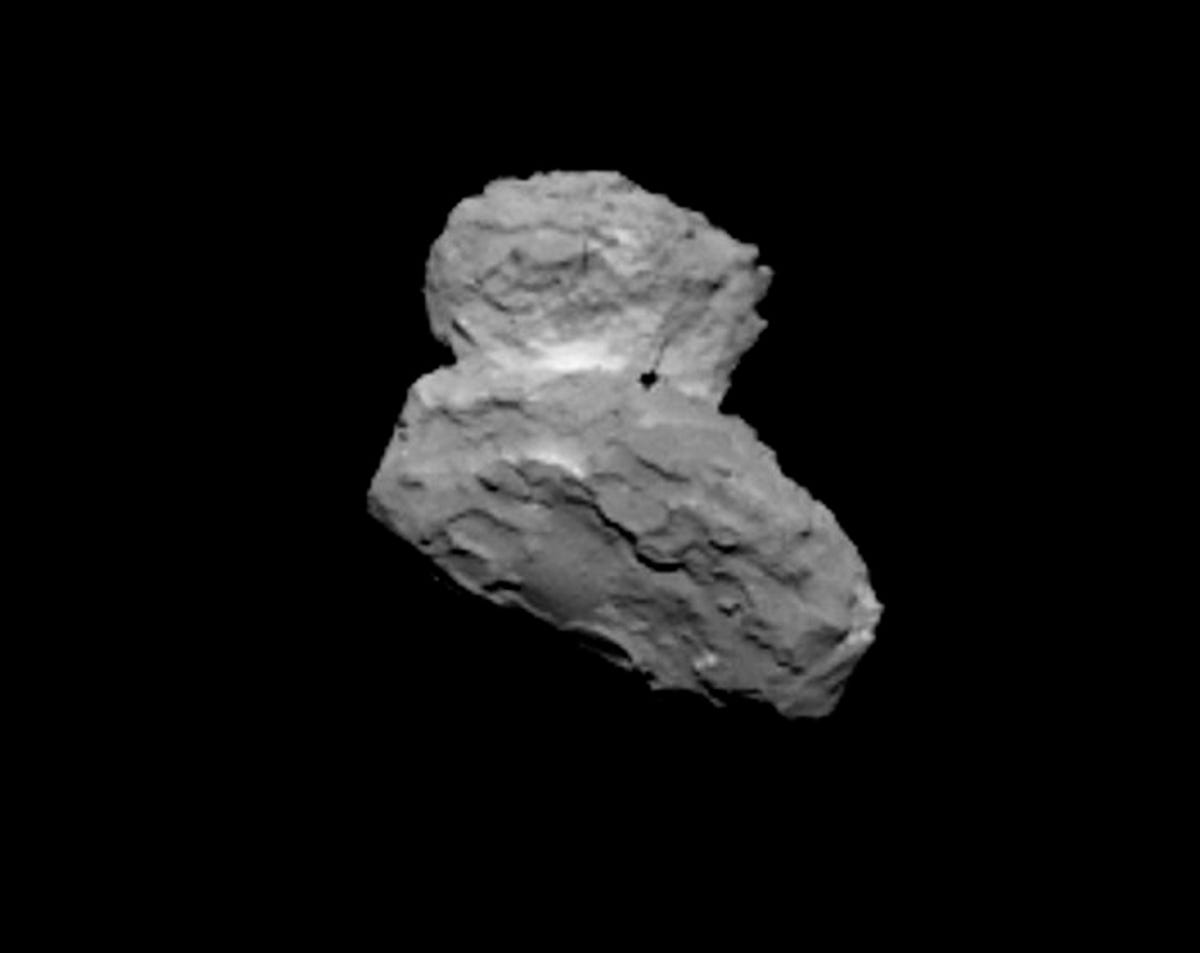Rosetta spacecraft enters comet's orbit (pictures)
In an out of this world first, the space probe enters the gravitational pull of a comet ahead of a landing attempt scheduled for November.

10-year pursuit of 67P
As the European Space Agency's Rosetta spacecraft arrived in the orbit of comet 67P/Churyumov-Gerasimenko earlier this week, its onboard OSIRIS narrow-angle camera captured this image from a distance of approximately 1000 km.
After a 10-year pursuit across the solar system, Rosetta entered the comet's orbit on Wednesday, becoming the first space probe to achieve such a feat.
Read more: Rosetta spacecraft makes historic comet rendezvous
Close-up of first comet to give a ride around the sun
405M kilometers from Earth
Chury, as the comet has been nicknamed, and Rosetta are currently around 405 million kilometers from Earth, said the ESA, just about half way between Jupiter and Mars.
Here we see Chury as imaged by Rosetta's OSIRIS narrow-angle camera on August 3, from a distance of 285 km. The image resolution of this photo is about 5.3 metres/pixel.
Approach to 67P
Next up is the landing mission, scheduled to take place in November. An explosive harpoon will drop the Philae's lander on the comet's icy surface, where it will have to drill in up to 20cm. Not an easy task.
"As the latest images from OSIRIS make clear, choosing a landing site for Philae will not be easy," said the space agency.
Rosetta will then escort Philae and its new ride on its trip around the sun until at least the end of 2015.
Boulders, craters, and cliffs
While focused on a smooth region on the "body" of comet 67P/Churyumov-Gerasimenko, Rosetta’s OSIRIS narrow-angle camera captured this image on August 6, the day it entered the comet's orbit. The image shows incredible detail and a range of features, including boulders, craters, and steep cliffs.
Detail of comet 67P
In this close-up image of comet 67P taken on August 6, from a distance of just 120 km, you can see what the ESA calls the comet's "head" at the left, casting shadows onto the "neck" and "body" to the right.
Full-frame NAVCAM image
This full-frame NAVCAM image was taken on August 4, at about 234 km from comet 67P/Churyumov-Gerasimenko.
The comet is not centered in the image as a result of a rendezvous burn conducted the previous day, said the ESA, which adjusted Rosetta's trajectory towards the comet.
Next, the ESA's landing site selection group will meet for their first full meeting in late August. They will select a maximum of 5 candidate sites for the scheduled November landing on the comet's surface.

